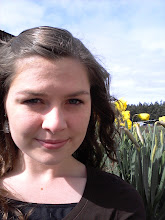I am SO excited to see the difference in the farm comparing this week to last week. Last Monday the guys started laying the Typar for the courtyard and VOILA! It's beautiful! There is now a wonderful, meandering path from the Quilted Garden to the Vertical Garden. There are several different aspects to the Courtyard. 1) The Lavender Display Garden, we planted many different kinds of lavender. 2) the Miniature Garden, this seems to charm every person who views it. It's so easy to see why. It's so cute! 3) The Herb Garden, obviously this is the place for the herbs. Then you reach the Wall! It is truly an amazing experience. I am so glad I am able to be a part of it. I will now take you on a pictoral tour of the gardens at A Knot In Thyme.

 (The Cool Side)
(The Cool Side)


















 Our first plant!!
Our first plant!! The beginning of the first wall.
The beginning of the first wall.